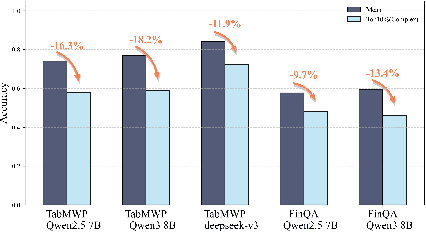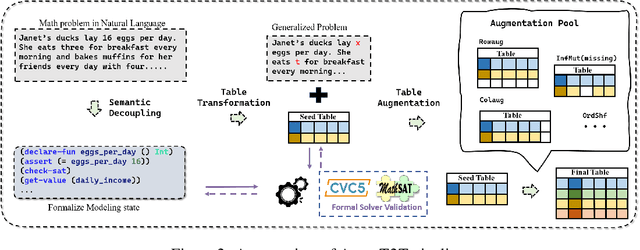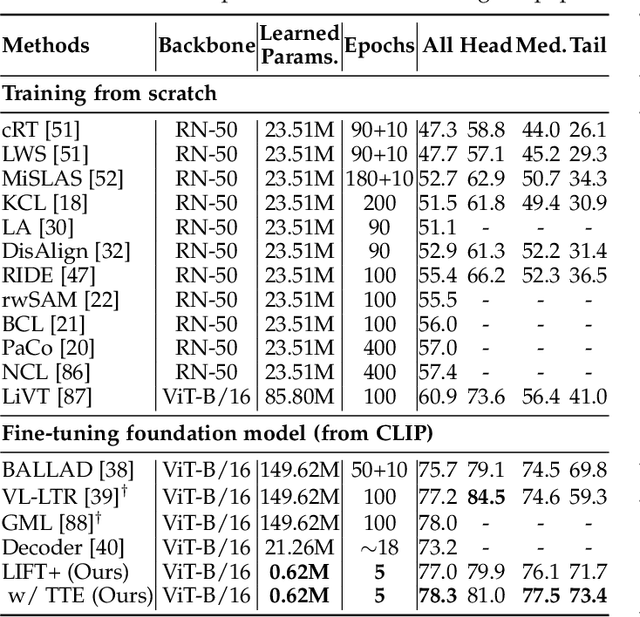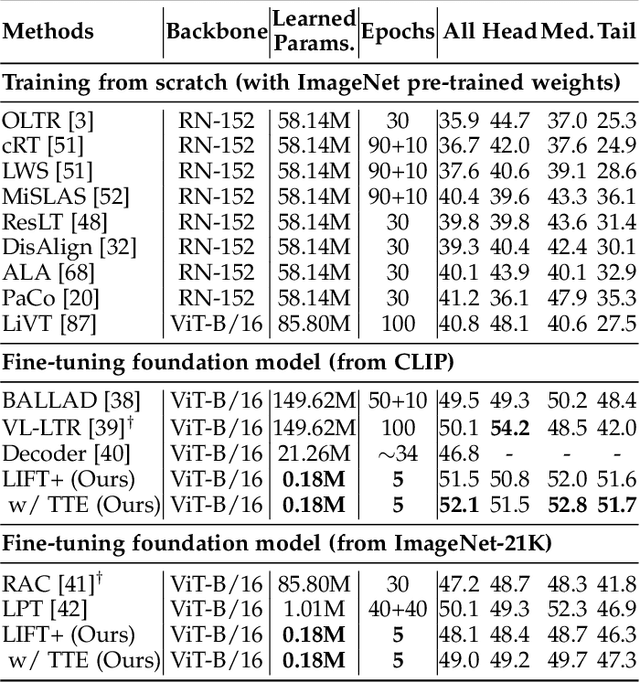Yu-Feng Li
Beyond Single: A Data Selection Principle for LLM Alignment via Fine-Grained Preference Signals
Aug 11, 2025Abstract:Aligning Large Language Models (LLMs) with diverse human values requires moving beyond a single holistic "better-than" preference criterion. While collecting fine-grained, aspect-specific preference data is more reliable and scalable, existing methods like Direct Preference Optimization (DPO) struggle with the severe noise and conflicts inherent in such aggregated datasets. In this paper, we tackle this challenge from a data-centric perspective. We first derive the Direct Multi-Preference Optimization (DMPO) objective, and uncover a key Preference Divergence (PD) term that quantifies inter-aspect preference conflicts. Instead of using this term for direct optimization, we leverage it to formulate a novel, theoretically-grounded data selection principle. Our principle advocates for selecting a subset of high-consensus data-identified by the most negative PD values-for efficient DPO training. We prove the optimality of this strategy by analyzing the loss bounds of the DMPO objective in the selection problem. To operationalize our approach, we introduce practical methods of PD term estimation and length bias mitigation, thereby proposing our PD selection method. Evaluation on the UltraFeedback dataset with three varying conflict levels shows that our simple yet effective strategy achieves over 10% relative improvement against both the standard holistic preference and a stronger oracle using aggregated preference signals, all while boosting training efficiency and obviating the need for intractable holistic preference annotating, unlocking the potential of robust LLM alignment via fine-grained preference signals.
When Is Prior Knowledge Helpful? Exploring the Evaluation and Selection of Unsupervised Pretext Tasks from a Neuro-Symbolic Perspective
Aug 10, 2025Abstract:Neuro-symbolic (Nesy) learning improves the target task performance of models by enabling them to satisfy knowledge, while semi/self-supervised learning (SSL) improves the target task performance by designing unsupervised pretext tasks for unlabeled data to make models satisfy corresponding assumptions. We extend the Nesy theory based on reliable knowledge to the scenario of unreliable knowledge (i.e., assumptions), thereby unifying the theoretical frameworks of SSL and Nesy. Through rigorous theoretical analysis, we demonstrate that, in theory, the impact of pretext tasks on target performance hinges on three factors: knowledge learnability with respect to the model, knowledge reliability with respect to the data, and knowledge completeness with respect to the target. We further propose schemes to operationalize these theoretical metrics, and thereby develop a method that can predict the effectiveness of pretext tasks in advance. This will change the current status quo in practical applications, where the selections of unsupervised tasks are heuristic-based rather than theory-based, and it is difficult to evaluate the rationality of unsupervised pretext task selection before testing the model on the target task. In experiments, we verify a high correlation between the predicted performance-estimated using minimal data-and the actual performance achieved after large-scale semi-supervised or self-supervised learning, thus confirming the validity of the theory and the effectiveness of the evaluation method.
Automated Text-to-Table for Reasoning-Intensive Table QA: Pipeline Design and Benchmarking Insights
May 26, 2025



Abstract:Reasoning with tabular data holds increasing importance in modern applications, yet comprehensive evaluation methodologies for reasoning-intensive Table Question Answering (QA) tasks remain nascent. Existing research is constrained by two primary bottlenecks: 1) Reliance on costly manually annotated real-world data, which is difficult to cover complex reasoning scenarios; 2) The heterogeneity of table structures hinders systematic analysis of the intrinsic mechanisms behind the underperformance of LLMs, especially in reasoning-intensive tasks. To address these issues, we propose an automated generation pipeline AutoT2T that transforms mathematical word problems into table-based reasoning tasks, eliminating the need for manual annotation. The pipeline can generate multiple variants of a table for the same reasoning problem, including noisy versions to support robustness evaluation. Based on this, we construct a new benchmark TabularGSM, which systematically spans a range of table complexities and trap problems. Experimental analyses through AutoT2T and TabularGSM reveal that the tight coupling between reasoning and retrieval or identification processes is a key factor underlying the failure of LLMs in complex Table QA tasks. This highlights the necessity for models to develop synergistic reasoning capabilities in order to perform effectively in complex Table QA tasks.
Realistic Evaluation of TabPFN v2 in Open Environments
May 22, 2025Abstract:Tabular data, owing to its ubiquitous presence in real-world domains, has garnered significant attention in machine learning research. While tree-based models have long dominated tabular machine learning tasks, the recently proposed deep learning model TabPFN v2 has emerged, demonstrating unparalleled performance and scalability potential. Although extensive research has been conducted on TabPFN v2 to further improve performance, the majority of this research remains confined to closed environments, neglecting the challenges that frequently arise in open environments. This raises the question: Can TabPFN v2 maintain good performance in open environments? To this end, we conduct the first comprehensive evaluation of TabPFN v2's adaptability in open environments. We construct a unified evaluation framework covering various real-world challenges and assess the robustness of TabPFN v2 under open environments scenarios using this framework. Empirical results demonstrate that TabPFN v2 shows significant limitations in open environments but is suitable for small-scale, covariate-shifted, and class-balanced tasks. Tree-based models remain the optimal choice for general tabular tasks in open environments. To facilitate future research on open environments challenges, we advocate for open environments tabular benchmarks, multi-metric evaluation, and universal modules to strengthen model robustness. We publicly release our evaluation framework at https://anonymous.4open.science/r/tabpfn-ood-4E65.
NeSyGeo: A Neuro-Symbolic Framework for Multimodal Geometric Reasoning Data Generation
May 21, 2025Abstract:Obtaining large-scale, high-quality data with reasoning paths is crucial for improving the geometric reasoning capabilities of multi-modal large language models (MLLMs). However, existing data generation methods, whether based on predefined templates or constrained symbolic provers, inevitably face diversity and numerical generalization limitations. To address these limitations, we propose NeSyGeo, a novel neuro-symbolic framework for generating geometric reasoning data. First, we propose a domain-specific language grounded in the entity-relation-constraint paradigm to comprehensively represent all components of plane geometry, along with generative actions defined within this symbolic space. We then design a symbolic-visual-text pipeline that synthesizes symbolic sequences, maps them to corresponding visual and textual representations, and generates diverse question-answer (Q&A) pairs using large language models (LLMs). To the best of our knowledge, we are the first to propose a neuro-symbolic approach in generating multimodal reasoning data. Based on this framework, we construct NeSyGeo-CoT and NeSyGeo-Caption datasets, containing 100k samples, and release a new benchmark NeSyGeo-Test for evaluating geometric reasoning abilities in MLLMs. Experiments demonstrate that the proposal significantly and consistently improves the performance of multiple MLLMs under both reinforcement and supervised fine-tuning. With only 4k samples and two epochs of reinforcement fine-tuning, base models achieve improvements of up to +15.8% on MathVision, +8.4% on MathVerse, and +7.3% on GeoQA. Notably, a 4B model can be improved to outperform an 8B model from the same series on geometric reasoning tasks.
Unlabeled Data or Pre-trained Model: Rethinking Semi-Supervised Learning and Pretrain-Finetuning
May 19, 2025Abstract:Semi-supervised learning (SSL) alleviates the cost of data labeling process by exploiting unlabeled data, and has achieved promising results on various tasks such as image classification. Meanwhile, the Pretrain-Finetuning paradigm has garnered significant attention in recent years, and exploiting pre-trained models could also reduce the requirement of labeled data in downstream tasks. Therefore, a question naturally occurs: \emph{When the labeled data is scarce in the target tasks, should we exploit unlabeled data or pre-trained models?} To answer this question, we select pre-trained Vision-Language Models (VLMs) as representative pretrain-finetuning instances and propose \textit{Few-shot SSL} -- a framework that enables fair comparison between these two paradigms by controlling the amount of labeled data used. Extensive experiments across various settings demonstrate that pre-trained VLMs generally outperform SSL methods in nearly all cases, except when the data has low resolution or lacks clear semantic structure. Therefore, we encourage future SSL research to compare with pre-trained models and explore deeper integration, such as using pre-trained knowledge to enhance pseudo-labeling. To support future research, we release our unified reproduction and evaluation framework. Codes are available at https://anonymous.4open.science/r/Rethinking-SSL-and-Pretrain-Finetuning-5566
Curriculum Abductive Learning
May 18, 2025Abstract:Abductive Learning (ABL) integrates machine learning with logical reasoning in a loop: a learning model predicts symbolic concept labels from raw inputs, which are revised through abduction using domain knowledge and then fed back for retraining. However, due to the nondeterminism of abduction, the training process often suffers from instability, especially when the knowledge base is large and complex, resulting in a prohibitively large abduction space. While prior works focus on improving candidate selection within this space, they typically treat the knowledge base as a static black box. In this work, we propose Curriculum Abductive Learning (C-ABL), a method that explicitly leverages the internal structure of the knowledge base to address the ABL training challenges. C-ABL partitions the knowledge base into a sequence of sub-bases, progressively introduced during training. This reduces the abduction space throughout training and enables the model to incorporate logic in a stepwise, smooth way. Experiments across multiple tasks show that C-ABL outperforms previous ABL implementations, significantly improves training stability, convergence speed, and final accuracy, especially under complex knowledge setting.
LIFT+: Lightweight Fine-Tuning for Long-Tail Learning
Apr 17, 2025



Abstract:The fine-tuning paradigm has emerged as a prominent approach for addressing long-tail learning tasks in the era of foundation models. However, the impact of fine-tuning strategies on long-tail learning performance remains unexplored. In this work, we disclose that existing paradigms exhibit a profound misuse of fine-tuning methods, leaving significant room for improvement in both efficiency and accuracy. Specifically, we reveal that heavy fine-tuning (fine-tuning a large proportion of model parameters) can lead to non-negligible performance deterioration on tail classes, whereas lightweight fine-tuning demonstrates superior effectiveness. Through comprehensive theoretical and empirical validation, we identify this phenomenon as stemming from inconsistent class conditional distributions induced by heavy fine-tuning. Building on this insight, we propose LIFT+, an innovative lightweight fine-tuning framework to optimize consistent class conditions. Furthermore, LIFT+ incorporates semantic-aware initialization, minimalist data augmentation, and test-time ensembling to enhance adaptation and generalization of foundation models. Our framework provides an efficient and accurate pipeline that facilitates fast convergence and model compactness. Extensive experiments demonstrate that LIFT+ significantly reduces both training epochs (from $\sim$100 to $\leq$15) and learned parameters (less than 1%), while surpassing state-of-the-art approaches by a considerable margin. The source code is available at https://github.com/shijxcs/LIFT-plus.
Verification Learning: Make Unsupervised Neuro-Symbolic System Feasible
Mar 17, 2025Abstract:The current Neuro-Symbolic (NeSy) Learning paradigm suffers from an over-reliance on labeled data. If we completely disregard labels, it leads to less symbol information, a larger solution space, and more shortcuts-issues that current Nesy systems cannot resolve. This paper introduces a novel learning paradigm, Verification Learning (VL), which addresses this challenge by transforming the label-based reasoning process in Nesy into a label-free verification process. VL achieves excellent learning results solely by relying on unlabeled data and a function that verifies whether the current predictions conform to the rules. We formalize this problem as a Constraint Optimization Problem (COP) and propose a Dynamic combinatorial Sorting (DCS) algorithm that accelerates the solution by reducing verification attempts, effectively lowering computational costs to the level of a Constraint Satisfaction Problem (CSP). To further enhance performance, we introduce a prior alignment method to address potential shortcuts. Our theoretical analysis points out which tasks in Nesy systems can be completed without labels and explains why rules can replace infinite labels, such as in addition, for some tasks, while for others, like Sudoku, the rules have no effect. We validate the proposed framework through several fully unsupervised tasks including addition, sort, match, and chess, each showing significant performance and efficiency improvements.
Micro Text Classification Based on Balanced Positive-Unlabeled Learning
Mar 17, 2025



Abstract:In real-world text classification tasks, negative texts often contain a minimal proportion of negative content, which is especially problematic in areas like text quality control, legal risk screening, and sensitive information interception. This challenge manifests at two levels: at the macro level, distinguishing negative texts is difficult due to the high similarity between coarse-grained positive and negative samples; at the micro level, the issue stems from extreme class imbalance and a lack of fine-grained labels. To address these challenges, we propose transforming the coarse-grained positive-negative (PN) classification task into an imbalanced fine-grained positive-unlabeled (PU) classification problem, supported by theoretical analysis. We introduce a novel framework, Balanced Fine-Grained Positive-Unlabeled (BFGPU) learning, which features a unique PU learning loss function that optimizes macro-level performance amidst severe imbalance at the micro level. The framework's performance is further boosted by rebalanced pseudo-labeling and threshold adjustment. Extensive experiments on both public and real-world datasets demonstrate the effectiveness of BFGPU, which outperforms other methods, even in extreme scenarios where both macro and micro levels are highly imbalanced.
 Add to Chrome
Add to Chrome Add to Firefox
Add to Firefox Add to Edge
Add to Edge